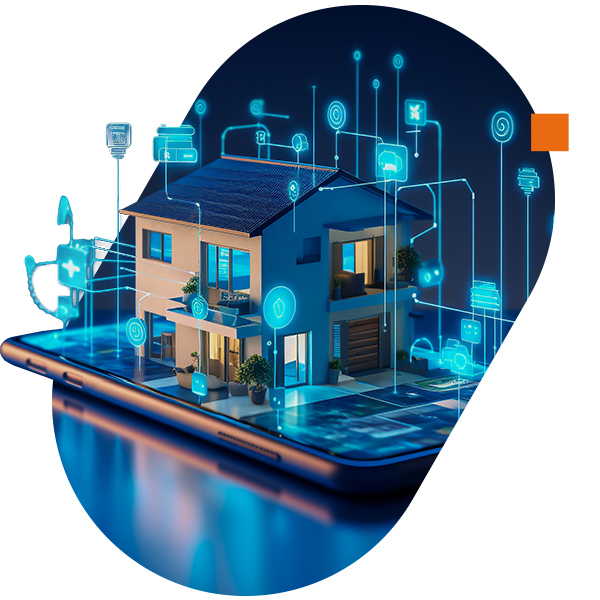The most profound technologies are those that disappear. They weave themselves into the fabric of everyday life until they are indistinguishable from it
Mark WeiserSmart Cities are urban environments where infrastructure and mobility services are managed in an intelligent and automated manner.
They represent an epochal shift in the evolution of modern cities, emerging as the most prevalent solution for ensuring energy efficiency and resource optimization on a broader scale.
But, in practical terms, what are the benefits that this type of automation can bring to our daily lives?
The convergence of advanced engineering and digital technology has given rise to intelligent spaces capable of learning, adapting, and interacting with unprecedented precision. Smart Buildings, innovative structures orchestrated by pervasive connectivity, enable centralized and optimized management of critical systems such as energy, security, and occupant comfort. The intelligent connection between devices, sensors, and data analytics platforms has the potential to radically transform the way we live, work, and interact with our built environment, ushering in a new era of efficiency, sustainability, and quality of life.
Teoresi’s expertise in the field of connected systems and smart mobility is taking another step forward with the exploration of technologies for sustainable building management. Currently, Teoresi has advanced applications that enable real-time control, analysis, planning, and management of all related activities.
In pursuit of its growth strategy in the smart cities market, Teoresi has finalized the acquisition of IO.T Solutions, a Milan-based company specialized in solutions for improving workplace comfort. Among the many technologies developed by the company, the multiprotocol software platform DINA – Connecting spaces is pivotal, especially in the context of smart building.
Designed specifically for facility managers, DINA enables a range of activities within a unique system, including profiling, access control, people flow management, space reservations such as desks and meeting rooms, management and allocation of resources in shared areas (cafeterias, dining areas, parking spaces, lockers), and energy consumption monitoring. Moreover, thanks to data from automated systems, it allows for the planning of usage and maintenance interventions, and even the adaptation of layouts based on actual needs, resulting in resource optimization.

Chairs, desks, architectural elements, locks, lighting and ventilation systems, monitors: every resource is interconnected with others through integrated sensors and communicates in real-time with users and facilty managers. Furthermore, DINA can detect and manage key information about connected objects: model, purchase date, installed firmware version, date of the last update, repair operation history, location, and interaction with inventory in stock.
The platform, integrable with Office and Google, seamlessly communicates with other home automation technologies and IoT devices, including sensors and actuators already available in the market.
